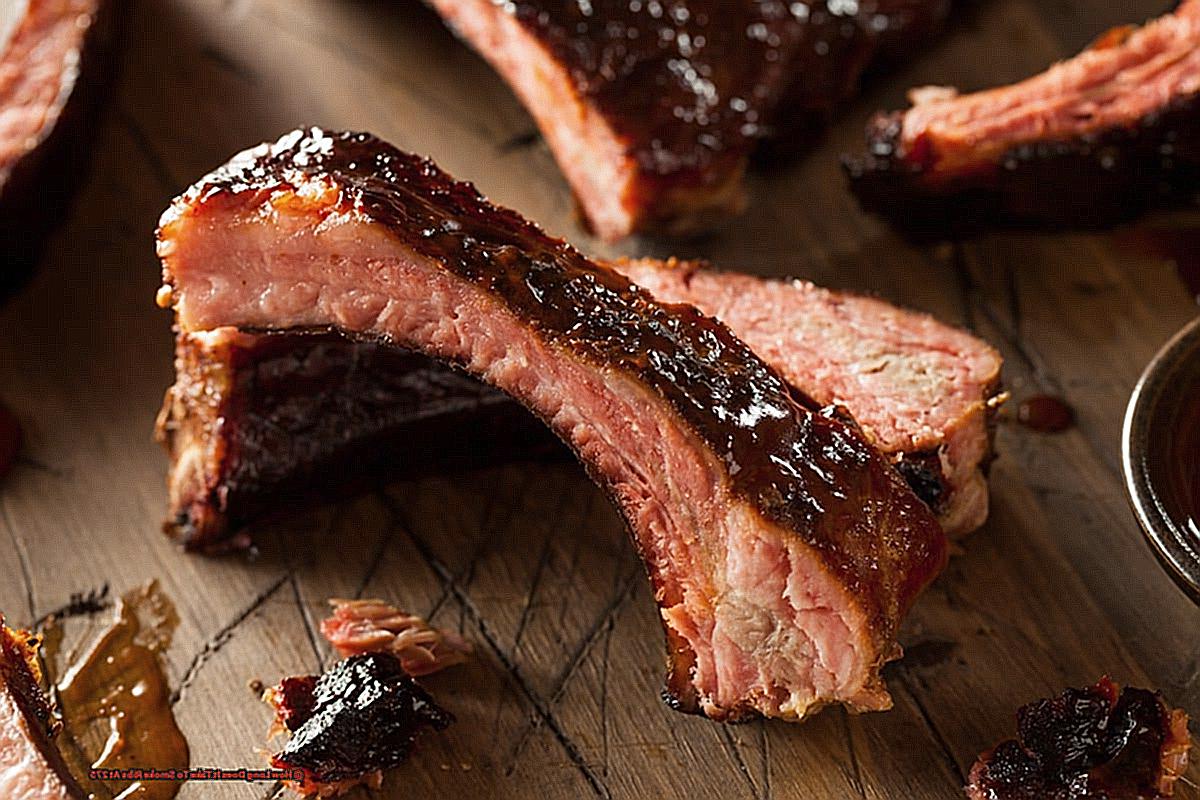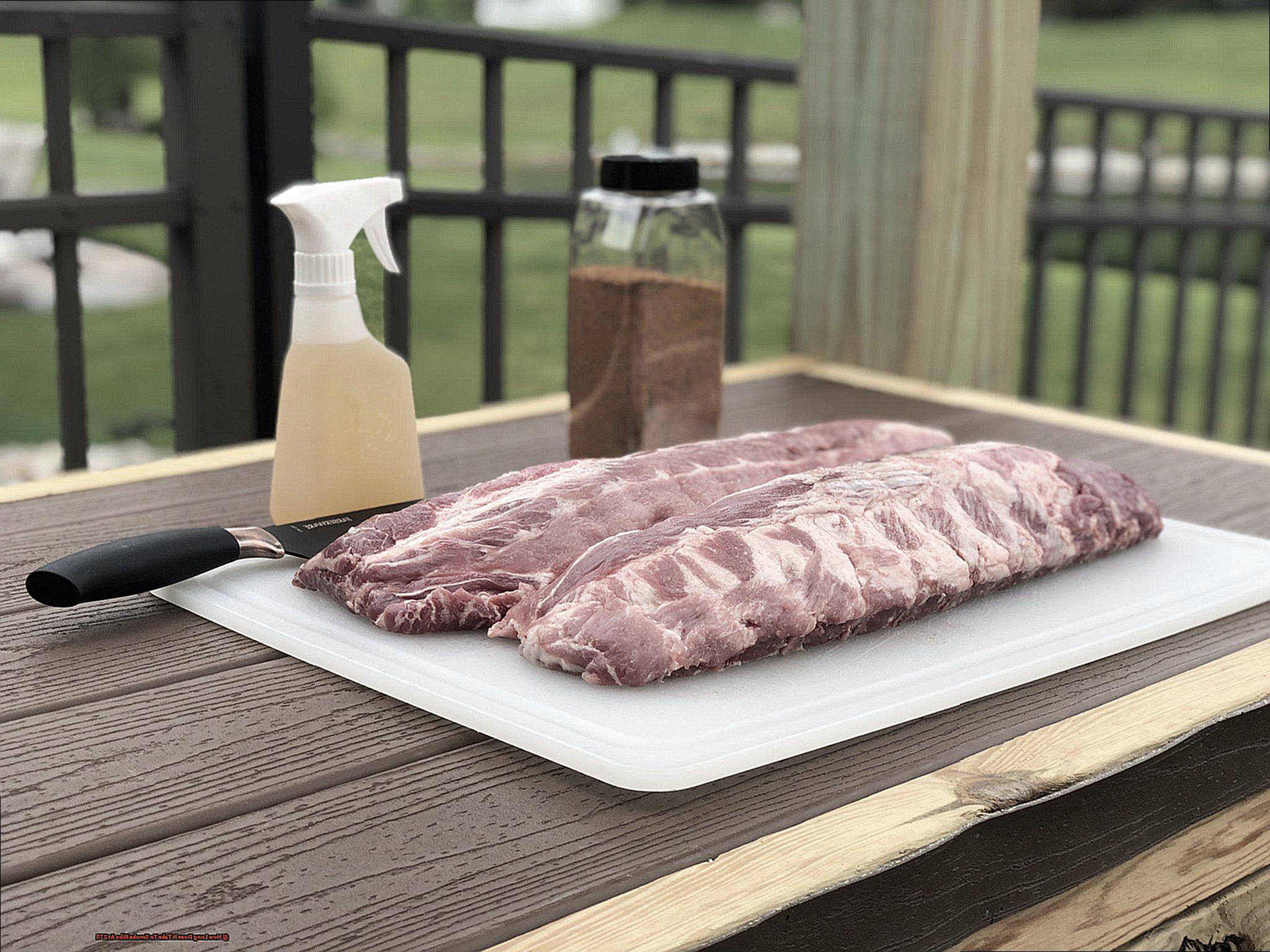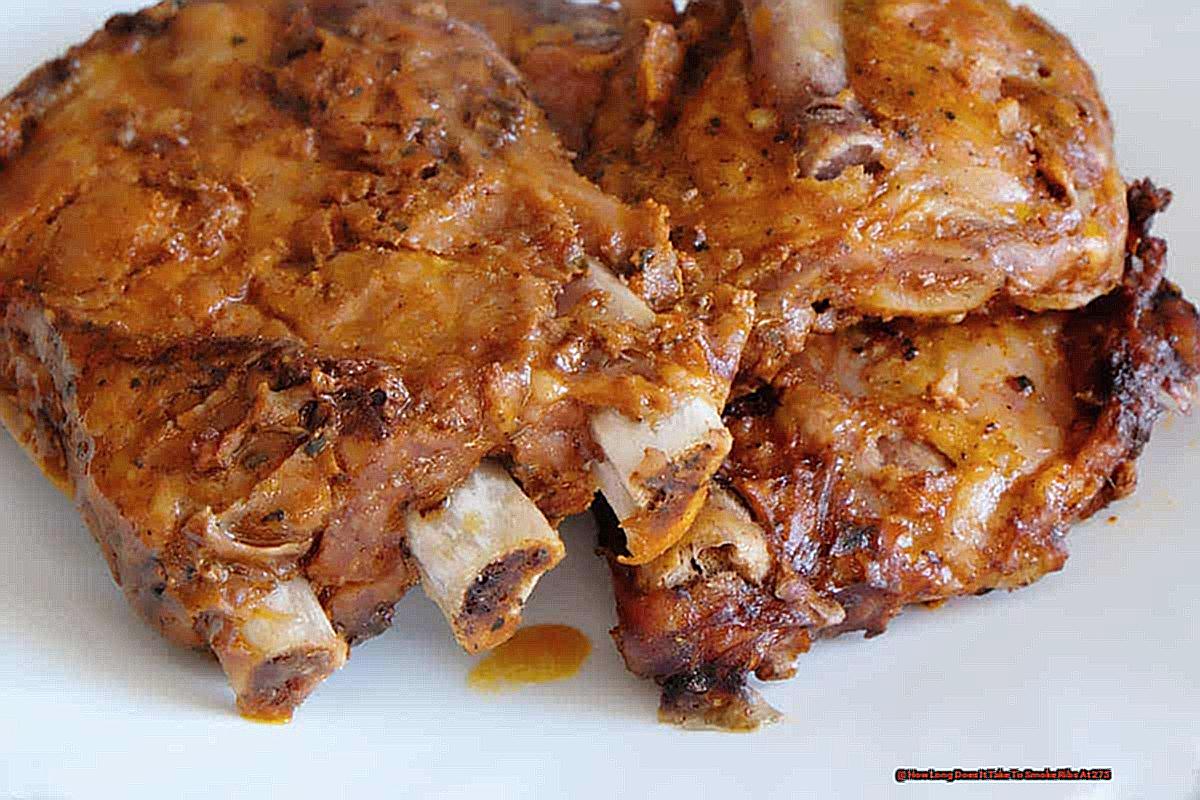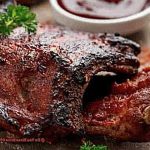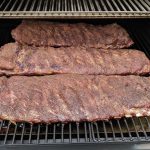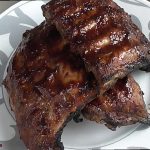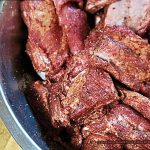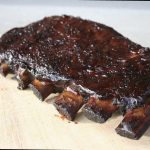Imagine a warm summer day, the sun shining down on you as you gather with friends and family for a backyard barbecue. The smell of sizzling meat fills the air, making your mouth water in anticipation. But as you prepare to smoke some ribs, a question lingers in your mind: how long will it take at 275 degrees?
Well, my friend, let me break it down for you. 275 degrees is the sweet spot for smoking ribs – and here’s why:
- Low and slow: This temperature allows for a slow cooking process, resulting in tender and juicy meat that falls off the bone.
- Perfect balance of smoke and heat: With 275 degrees, you get just the right amount of smoke to infuse into the meat without overpowering it.
- Time-efficient: Unlike lower temperatures that require hours of cooking time, 275 degrees will have your ribs ready in just a few hours.
- Crispy bark: The slightly higher temperature helps create a crispy exterior on your ribs while keeping them moist on the inside.
So, next time you’re planning a barbecue, remember to set your grill to 275 degrees for perfectly smoked ribs. Trust me, once you taste the delicious results, there’s no turning back. Your guests will be begging for your secret recipe – but we’ll keep it between us.
Contents
- 1 The Basics Of Smoking Ribs
- 2 How Long to Smoke Ribs at 275 For Different Types Of Ribs?
- 3 Tips For Smoking Ribs At 275 Degrees
- 3.1 Preheat your smoker to 275°F
- 3.2 Use a thermometer
- 3.3 Soak wood chips
- 3.4 Season with mustard or oil and BBQ rub
- 3.5 Wrap or unwrap for desired crust
- 3.6 Consider the size of your ribs
- 3.7 Use butcher’s paper or aluminum foil
- 3.8 By following these key tips, you can successfully smoke ribs at 275 degrees Fahrenheit and achieve the perfect texture and flavor for a delicious barbecue experience. Don’t be intimidated by smoking ribs
- 3.9 Tips For Smoking Ribs At 275 Degrees
- 4 The 3-2-1 Method
- 5 Checking For Doneness
- 6 Resting And Serving
- 7 Flavor Variations And Rubs
- 8 FAQ about Slow and Low: How Long to Smoke Ribs at 275 Degrees
- 9 Conclusion
The Basics Of Smoking Ribs
When it comes to smoking ribs, the ideal temperature to achieve juicy, tender ribs with a crispy exterior is 275°F for a duration of 3 hours. However, it is important to note that this cooking time may vary depending on factors such as the size and type of ribs being smoked, as well as the type of smoker being used.
For example, a 2-pound rack of ribs will typically take 2-3 hours to smoke at 275°F, while larger racks may require more time. Before adding the ribs to the smoker, make sure to remove the silver skin and season them with either mustard or oil and your preferred BBQ rub. Soaking wood chips in water before adding them to the smoker can also result in increased smoke production.
Once your smoker has reached the desired temperature of 275°F, add the ribs and allow them to smoke for 2 hours.
After this initial smoking period, you can choose to wrap the ribs in foil for an additional hour of smoking or leave them unwrapped for a crispier crust.
To ensure optimal tenderness, use a thermometer to check that the internal temperature of the meat reaches between 180°F-190°F.
How Long to Smoke Ribs at 275 For Different Types Of Ribs?
Smoking ribs at a temperature of 275 degrees is a delicate process that requires patience and attention to detail. The recommended smoking times for various types of ribs can vary, but here are some general guidelines to follow.
Baby back ribs typically require 4-5 hours of smoking, while spare ribs may take 5-6 hours. St. Louis style ribs and beef ribs tend to take longer, with recommended smoking times of 5-6 hours and 6-7 hours, respectively.
However, it’s worth noting that these are merely guidelines and can be affected by factors such as the thickness of the meat and personal preference.
If you’re new to smoking ribs at 275 degrees, there are a few helpful tips to keep in mind. First and foremost, it’s crucial to use a meat thermometer to ensure the internal temperature of the meat reaches a safe level for consumption.
For added flavor, consider using wood chips during the smoking process. You can also experiment with different types of wood chips to create your desired smoke flavor.
Depending on your preferences, you may choose to wrap the ribs in foil or leave them unwrapped while they smoke. Wrapping the ribs will result in a more tender texture, while leaving them unwrapped will create a crispy exterior.
Before placing the ribs in the smoker, it’s essential to prepare them properly. This involves removing the silver skin and seasoning the ribs with your preferred blend of spices. By following these steps and keeping these tips in mind, you can confidently smoke different types of ribs on your BBQ grill or smoker.
Tips For Smoking Ribs At 275 Degrees
If you want tender, juicy, and flavorful smoked ribs, smoking them at 275 degrees Fahrenheit is the way to go. To help you achieve the perfect texture and flavor for your ribs, here are some key tips to keep in mind.
Preheat your smoker to 275°F
Before adding the ribs, make sure to preheat your smoker to the desired temperature. This ensures that the heat is evenly distributed and maintained throughout the cooking process.
Use a thermometer
To ensure that your ribs are cooked perfectly, use a thermometer to monitor the internal temperature. For tender ribs, aim for an internal temperature between 180°F-190°F.
Soak wood chips
For more smoke production and added flavor, soak your wood chips in water before adding them to the smoker.
Season with mustard or oil and BBQ rub
Before smoking, prepare your ribs by removing the silver skin and seasoning them with mustard or oil and your favorite BBQ rub. This not only adds extra flavor but also helps the rub stick to the meat.
Wrap or unwrap for desired crust
After 2 hours of smoking, you can choose to wrap your ribs in foil for a more tender result or leave them unwrapped for a crispier crust.
Consider the size of your ribs
Keep in mind that the size of your ribs can affect cooking time. A 2-pound rack of ribs will take approximately 2-3 hours, while larger racks will take longer.
Use butcher’s paper or aluminum foil
Wrapping your ribs in butcher’s paper or aluminum foil during the smoking process can help retain moisture and add extra tenderness.
By following these key tips, you can successfully smoke ribs at 275 degrees Fahrenheit and achieve the perfect texture and flavor for a delicious barbecue experience. Don’t be intimidated by smoking ribs
with the right techniques and temperature, you can create mouth-watering, succulent ribs that will impress your loved ones.
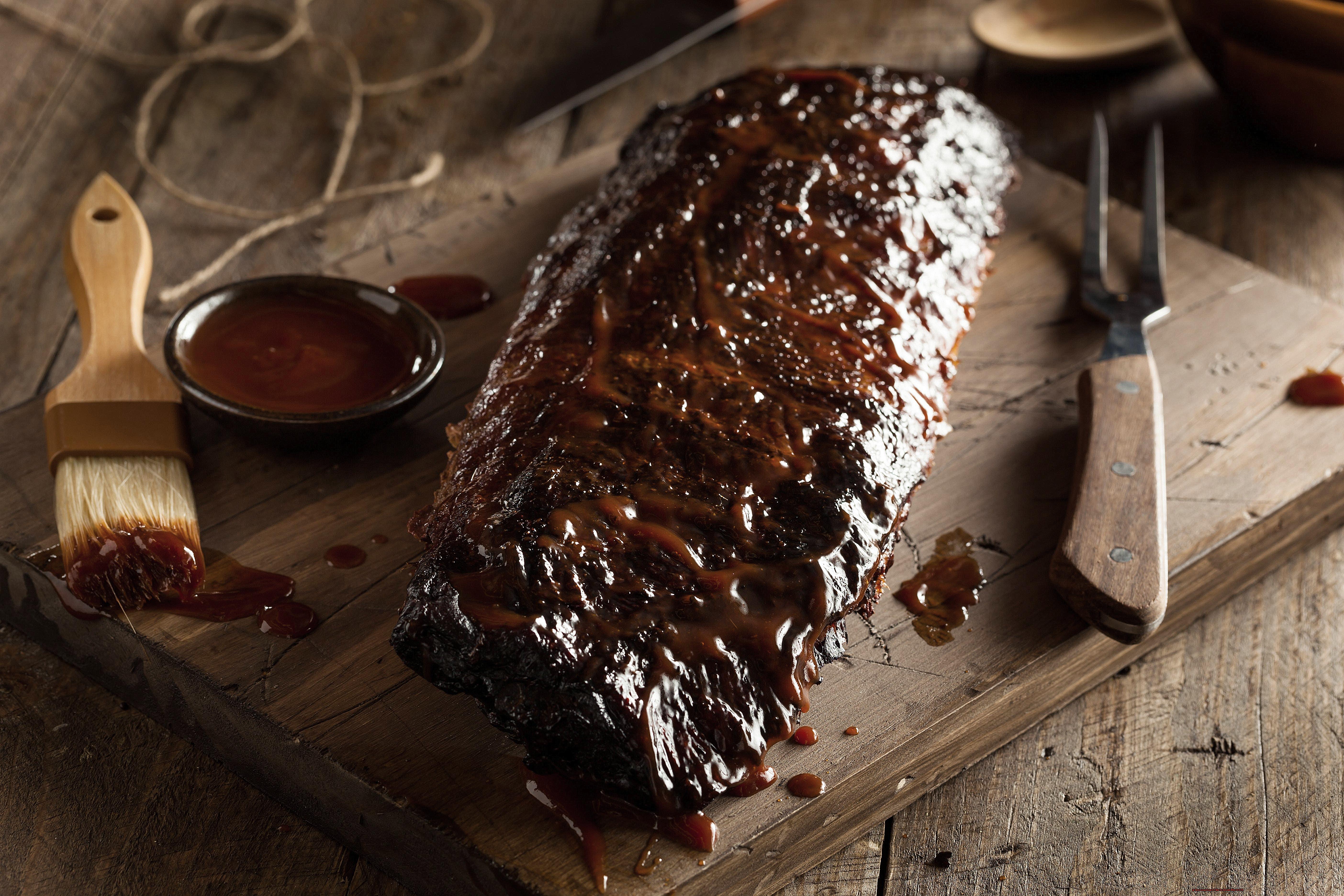
Tips For Smoking Ribs At 275 Degrees
Smoking ribs at 275 degrees Fahrenheit can result in tender, juicy, and flavorful meat. However, it’s important to follow some key tips to ensure the best results. Preheat your smoker to 275°F, use a thermometer to monitor internal temperature, soak wood chips for more smoke production, season with mustard or oil and BBQ rub, wrap or unwrap for desired crust, consider the size of your ribs, and use butcher’s paper or aluminum foil for added moisture and tenderness. This will help you achieve the perfect texture and flavor for your smoked ribs.
The 3-2-1 Method
This method requires cooking the ribs for 3 hours, followed by wrapping them in foil and cooking for an additional 2 hours, and finally cooking them unwrapped with BBQ sauce for 1 hour. Although this method is commonly used for spare ribs, which typically require longer cooking time at a slightly higher temperature, it is not considered the most optimal way to smoke ribs as it can result in overcooked and excessively tender meat.
Professional pitmasters competing in BBQ contests utilize a different technique where the ribs remain on the bone until they are bitten off. For baby back ribs, it is recommended to smoke them for approximately 3 hours without foil, then wrap them in foil and smoke for 1 to 1.5 hours, before finally smoking without foil for an additional 20 minutes. It is crucial to use a reliable smoker thermometer to maintain a steady temperature of around 225F. Additionally, placing the ribs on one side of the grill while keeping the charcoal on the other side creates an indirect cooking method, allowing for slow cooking and better absorption of smoky flavors.
When it comes to selecting wood, it is advised to start with one larger wood chunk and add more if necessary. Popular wood options for smoking ribs include hickory, mesquite, fruit woods such as cherry or pecan, or a combination of flavors. It is also important to note that this recipe was specifically designed for baby back ribs; spare ribs may need a longer smoking time.
While there are ongoing debates about whether it is better to smoke at 225F or 250F, it ultimately depends on personal preference. Some individuals prefer the “221” method, which involves starting with two hours of unwrapped smoking before wrapping in foil with liquid, while others prefer the “321” method, which entails smoking unwrapped for three hours before wrapping and finishing with one hour of unwrapped smoking with sauce. However, both of these methods can result in overcooked ribs due to the prolonged time spent wrapped in foil.
For those who prefer a shorter cooking time, the “211” method may be more suitable. This method involves 2 hours of unwrapped smoking, followed by 1 hour of wrapping and 1 hour of unwrapped smoking with sauce. This approach is better suited for baby back ribs.
Regardless of which method or temperature you choose, it is crucial not to overcook the ribs. They should be tender but not excessively tender in order to achieve the perfect texture and flavor. Leftover ribs can also be safely and deliciously reheated.
Checking For Doneness
When smoking ribs at 275 degrees, there are a few ways to determine when they are done. One method is to use an instant-read thermometer to check the internal temperature of the meat. The desired temperature for ribs is between 180-190°F. Another option is to perform the “bend test” by picking up the rack of ribs with a pair of tongs near the center. If the rack bends easily and the meat tears slightly, it is done. Additionally, you can also visually check the color and texture of the meat. When done, it should have a nice caramelized crust and the meat should be tender and easily pull off the bone.
It’s worth noting that these methods may not be accurate for all types of ribs, as different cuts may have different optimal temperatures for doneness. For instance, spare ribs may require a higher temperature than baby back ribs. It’s always recommended to double-check with a thermometer to ensure proper doneness.
Another crucial factor in determining when ribs are done smoking at 275 degrees is allowing them to rest for a few minutes before cutting into them. This allows the juices to redistribute and ensures that the meat stays tender and juicy.
To summarize, here are some key points to remember when checking for doneness while smoking ribs at 275 degrees:
- Use an instant-read thermometer to check the internal temperature of the meat, aiming for 180-190°F.
- Perform the “bend test” by picking up the rack of ribs with tongs near the center.
- Visually check for a caramelized crust and tender meat.
- Allow the ribs to rest for a few minutes before cutting into them.
- Double-check with a thermometer to ensure proper doneness.
- Keep in mind that different types of ribs may have different optimal temperatures for doneness.
Below is a table displaying recommended internal temperatures for various types of ribs:
| Rib Type | Recommended Internal Temperature |
| Baby Back Ribs | 180-190°F |
| Spare Ribs | 190-205°F |
| St. Louis Style Ribs | 190-205°F |
| Beef Ribs | 185-200°F |
| Pork Country Style Ribs | 190-200°F |
| Lamb Ribs | 170-185°F |
It’s also important to note that these temperatures are just guidelines and may vary depending on personal preferences and cooking methods. The most vital thing is to ensure that the ribs are cooked to your desired level of tenderness and flavor.
Resting And Serving
After smoking, it’s important to let your ribs rest before serving. This allows the meat to cool down and reabsorb its juices, resulting in a more delectable and tender eating experience. Skipping this crucial step can lead to overcooked and less flavorful ribs.
The specific resting time for smoked ribs may vary depending on the type of ribs and their thickness. Generally, pork ribs need 0- minutes of resting time, while beef ribs require at least 0 minutes. During this period, the internal temperature of the meat will continue to rise, reaching its ideal temperature for tenderness and flavor.
Additionally, resting also allows the caramelized crust on the outside of the ribs to develop further, adding depth to the overall flavor. This crust, also known as the “bark,” forms when the sugars in the dry rub caramelize during smoking. Allowing the ribs to rest helps set this bark and prevents it from being damaged when cutting into the meat.
Moreover, resting smoked ribs also has a significant impact on presentation and ensures that the meat stays moist and juicy. Cutting into hot meat immediately after cooking can cause all the juices to run out, resulting in dry and tough ribs. Allowing them to rest first gives the juices time to redistribute evenly throughout the meat, making each bite succulent and flavorful.
To properly rest smoked ribs, place them on a cutting board or platter and loosely cover them with aluminum foil. This will help retain heat while still allowing excess steam to escape. Avoid wrapping them tightly as this can cause the meat to overcook and become mushy.
Flavor Variations And Rubs
There are various rubs that can be used to elevate the flavor of smoked ribs cooked at 275 degrees, such as dry rubs, wet rubs, mustard rubs, sweet rubs, and spicy rubs. These rubs can consist of a wide range of ingredients, including herbs, spices, sugar, and liquid components like mustard or vinegar. To discover the ideal flavor profile for your smoked ribs, try out different combinations and get creative with your ingredients.
When it comes to flavor variations and rubs, there are endless possibilities to explore. For example, you could create a zesty dry rub using a blend of paprika, cayenne pepper, garlic powder, and brown sugar. Or you could opt for a tangy wet rub with apple cider vinegar, honey, and soy sauce. The key is to experiment with different ingredients and find the perfect balance of flavors to enhance your smoked ribs.
But don’t just limit yourself to traditional rub ingredients – think outside the box. Try adding unexpected elements like coffee grounds or cocoa powder to your dry rub for a unique twist on the classic. You could even mix up your own homemade BBQ sauce to use as a wet rub for added depth of flavor.
Ultimately, the key to creating mouthwatering smoked ribs lies in finding the perfect rub that suits your taste preferences. So don’t be afraid to get creative and have fun experimenting with different flavor combinations until you find your perfect match.
FAQ about Slow and Low: How Long to Smoke Ribs at 275 Degrees
It is typically estimated that smoking ribs at 275 degrees Fahrenheit will take approximately 5-6 hours.
However, this time frame may vary depending on factors such as the type of ribs being used, their thickness, and individual preferences for tenderness. To ensure optimal results, it is recommended to use a meat thermometer to check the internal temperature of your ribs during the cooking process.
This will help to accurately gauge when your ribs are ready to be served. Keep in mind that these factors can greatly impact the cooking time, so it is important to keep a close eye on your ribs while they smoke.
Conclusion
After hours of slow cooking at 275 degrees Fahrenheit, the result is melt-in-your-mouth ribs with a tantalizingly crispy exterior.
This temperature strikes the perfect balance between time efficiency and flavor, making it the ideal choice for smoking ribs. Don’t forget to use a thermometer to ensure your ribs are cooked to perfection and allow them to rest before serving for maximum tenderness and taste.
And when it comes to seasoning, don’t be afraid to think outside the box and experiment with unique rubs and flavor combinations.

